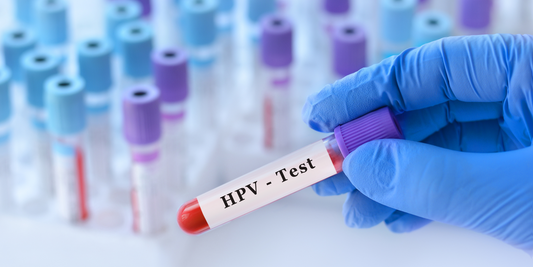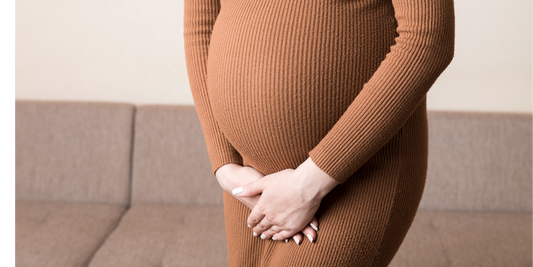
Relevance of a Covid-19 infection and its long-term consequences
Covid 19 pandemic has changed the world fundamentally since 2019 and still shapes the lives of many people today. Although the acute threat to the virus has now been brought under control in many parts of the world, it remains a topic of persistent relevance. In 2024, the landscape of protective measures, test regulations and the handling of long -term consequences, such as Long Covid, developed considerably.
Gone are the days of the nationwide lockdowns and the ubiquitous mask requirement, but the virus is still a reality we have to live with. Protective measures have become more differentiated and are more likely to be based on local conditions and individual risk factors. The test strategies have also changed: While regular tests were reduced in many places, access to rapid tests and PCR tests remains of great importance in certain situations.
The progress in research and treatment is particularly important for those affected by Long Covid, the number of which is still growing. New therapy approaches and specialized rehabilitation offers offer hope, but many affected people continue to fight with the long -term consequences of the disease. The question of how we are dealing with these challenges as a society remains highly topical and requires an informed and differentiated look at the developments of recent years.
In the following we take a closer look at the current developments in dealing with Covid-19 and shed light on how protection and care for those affected have changed since the early days of pandemic. Stay tuned to find out what you need to know now.

Long and Post-Covid symptoms
The terms Covid acutin infection, Long covid and Post Covid Relate to different phases and aspects of the disease by the SARS-COV-2 virus and have specific definitions:
Covid acutin infection: This describes the initial phase of the disease after infection with the SARS-COV-2 virus. The acute infection usually takes up to four weeks and includes the symptoms that are directly connected to the viral infection, such as fever, cough, shortness of breath, loss and odor loss, and in severe cases pneumonia and other complications. The acute phase ends when the symptoms leave and the patient recovers.
Long covid: This phase describes the presence of symptoms that remain more than four weeks after the acute infection. These symptoms can be varied and affect various organ systems, such as exhaustion (fatigue), shortness of breath, cognitive impairments ("brain fog"), as well as muscle and joint pain. Long Covid is still considered an exclusion diagnosis and is diagnosed if the symptoms continue after the acute phase without interruption and stop at least four weeks. The term long covid is often used synonymously to post covid. That is not true, so it is important to differentiate both terms in medicine, even if the transition is fluid.
Post Covid: Post Covid is defined in medicine as a phase in which the symptoms continue after 12 weeks, and it becomes clearer that they could be long -term or chronic. Post Covid includes both the long-term symptoms of Long Covid and Chronic Conditions, which can develop from COVID 19 infection.

Chronification of the clinical picture
A clinical picture is considered chronified when the symptoms longer than three months Stop and a return to the normal state of health seems unlikely. This applies to Long Covid and other chronic diseases such as myalgic encephalomyelitis/chronic fatigue syndrome (ME/CFS). Chronic diseases often require long -term and comprehensive care to manage the symptoms and improve the quality of life of those affected.
Current prevalence
The epidemiological situation in Germany shows that Covid-19 continues to circulate, even if most people are either immunized or already infected. In the summer of 2024, an increase in COVID 19 incidence was observed in Germany. This increase is due to several factors:
- New virus variants: New variants have spread since the beginning of the year and are responsible for a significant proportion of the new infections. These variants sometimes show increased transferability and can partially avoid existing immunity, which leads to a higher infection rate.
- Seasonal effects: Although summer is usually a time in which respiratory infections decrease, there was an unusually high number of covid 19 cases this year. This could be related to increased trips and major events that took place during the summer months. Such activities promote close contact between people and facilitate virus transmission. In addition, the travel quota is highest in summer, so that people are increasingly abroad and possible Corona hotspots.
- Declining vaccination protection: In many people, the effect of vaccination or an earlier infection decreases, which makes it more susceptible to another infection. Although the vaccination campaigns continue to run, the willingness to vaccinations is lower than in previous years, which contributes to the spread of the virus.
- Reduced protective measures: With the cancellation of many state protective measures such as mask obligation and restrictions in public life, the conditions for spreading have improved. At a time when the population feels safer, vigilance decreases, which increases the risk of infection.
The prevalence of Long Covid varies depending on the study, but general estimates suggest that about 10-20% of the COVID 19-infected people are affected. Around 65 million people worldwide are affected by Post Covid.

Acceptance of the tests and their effects
An essential factor that influences the current Covid 19 situation is to accept the tests. Since the peak of pandemic, many countries, including Germany, have adapted their test strategies and reduced the number of tests carried out. This leads to a lower recording and possibly underestimating the actual number of infection. According to the European Center for Disease Prevention and Control (ECDC), the reduction of the tests has impaired the ability to use the spread of new variants and the general epidemiological situation to monitor regular tests for the coronavirus at home at an early stage. It is therefore recommended to always Rapid test to keep at home. This not only ensures your own health, but also protect your fellow human beings from a new infection. This can be protected by particularly endangered groups of people.

Common symptoms in long and post covid
The most common symptoms of Long Covid include a variety of symptoms that affect different organ systems and can significantly impair the quality of life of those affected.
- Fatigue and exhaustion: A persistent, often overwhelming fatigue, which is hardly alleviated by calm, is one of the most characteristic and most impairing symptoms of Long Covid. This leading exhaustion cannot currently be treated.
- Cognitive impairments (Brain Fog): Those affected often report on concentration problems, memory disorders and a slowdown with mental processes that can make everyday life more difficult.
- Respiratory symptoms: Persistent shortness of breath, coughing and chest pain indicates the participation of the lungs, even with formerly mild Covid 19 courses.
- Musculoskeletal complaints: Pain in muscles and joints as well as general weakness can significantly impair mobility and well -being.
- Neurological symptoms: In addition to cognitive problems, headaches, dizziness and sensory disorders such as tingling or numbness often occur.
- Psychological stress: Depression, anxiety and sleep disorders are common side effects that can occur through the sudden occurrence of a serious illness.
- Cardiovascular symptoms: Cardiac arrhythmias, rapid heartbeat and occasionally chest pain and breasts can indicate a continued stress on the cardiovascular system.
- Deterioration of existing clinical pictures: Long and Post Covid can permanently worsen existing previous illnesses such as asthma, cardiovascular diseases or neurological diseases. Patients often report an increase in the symptoms of these underlying diseases, which were triggered or tightened by the COVID 19 infection.
| category | Symptoms |
|---|---|
| Autonomous symptoms | Fatigue, sleep disorders |
| Cardiac symptoms | Breast pain, palpitations, breasts, postural orthostatic tachykardy syndrome |
| Cognitive symptoms | Brain fog, memory problems, difficulties of concentration, depression, fear |
| Dermatological symptoms | Hair loss |
| Gastrointestinal symptoms | Digestive problems |
| Immunological symptoms | Fever |
| Muscle and joint symptoms | Muscle pain, joint pain |
| Neurological symptoms | Headache, loss of the sense of smell, tingling sensations |
| Pulmonary symptoms | Shortness of breath, cough, sore throat |
| Post Exertional Malaise (PEM) |

Pathomechanisms of Post-Covid
The exact pathomechanisms of Long Covid have not yet fully understood, but current research indicate several possible causes:
- Persistent virus components: It is believed that parts of the virus remain in the body and cause a persistent inflammatory reaction.
- Autoimmune reactions: Covid-19 can trigger autoimmune reactions in which the immune system erroneously attacks the body's own tissue.
- Dysfunction of the immune system: A misogorming of the immune system can lead to persistent inflammation and symptoms.
- Damage of organs: The damage to organs during the acute phase can have long -term effects that contribute to the symptoms of Long Covid.

Problems in the everyday life of Long Covid sufferers
Long Covid presents those affected with considerable challenges in everyday life. These problems extend to different areas, including social interactions and the general participation in social life.
Isolation and social stigmatization:
- isolation: Many Long Covid people are inevitably experiencing social isolation, as their persistent symptoms make it difficult for them to participate in social activities. Those affected often need support in the sense of physical care or aids.
- Stigmatization: There is still a lack of understanding and acceptance for Long Covid. Those affected can be stigmatized and not taken seriously due to their symptoms, which are often invisible. Due to the complexity of the disease, there are no subject -specific contact points and medical specialist centers. These show enormous waiting times of 12-24 months or had to close again due to the lack of start-up financing. As a result, those affected and their environment feel left alone with the disease and remain in the uncertain.
Mental health:
- Depression and fear: The persistent health problems and the inability to lead a normal life can lead to depression and anxiety. The uncertainty about the duration of the symptoms and the lack of recognition by cost bearers and social medicine also contribute to these psychological stress.
Restrictions in everyday life:
- Completion of everyday tasks: The persistent fatigue and other symptoms such as shortness of breath and pain make it difficult for those affected to do everyday tasks. Even simple activities such as shopping, housework or the care of children can become a big challenge.
- mobility: Many affected people have difficulty moving, which further restricts participation in social and professional activities. Many people are no longer able to live an independent age -appropriate life. The problem is not to accept aids as support, but rather that people often do not receive a degree of disability (GdB) or receive a degree of care. Here, too, there are too few guidelines that take the covid into account in the categorization.
Professional challenges:
- Ability to work: The symptoms of Long Covid can severely affect work ability. Longer phases of illness and the inability to return to work are common problems. This not only leads to financial difficulties, but can also affect self -esteem and professional identity.
- Professional reintegration: The return to the workplace is often difficult. Flexible working hours and conditions are necessary, but are not always offered. Measures such as the "Hamburg Model" for step -by -step reintegration can be helpful, but often require individual adjustments, since the reintegration period for moderately and heavier people is not sufficient, so that new concepts are required to permanently integrate people back into the labor market.
- Long waiting times: Due to the high demand and limited capacities in specialized rehabilitation facilities, those affected often have to accept long waiting times. In addition, very few facilities specialize in Long and Post Covid. Due to the lack of evidence, no rigid scheme may be observed in rehabilitation. Due to the different symptoms and the different focuses, the need for each patient and patient are required. Some of those affected are advised against rehabiliation due to the post of exertial malaise, since the risk of provoking a continuing deterioration in state is too great. Special Post Covid centers often have a waiting time more than 12 months. This is a valuable time for those affected to have diagnostic clarification initiated. Here too it means: wait.
- Multidisciplinary approaches: Comprehensive rehabilitation requires multidisciplinary approaches that integrate in addition to the subject-related focus, physiotherapy and occupational therapy, movement therapy, psychological support and targeted medical treatment as well as current knowledge of the latest knowledge. However, such programs are not available everywhere.
Financial stress:
- Treatment and rehabilitation costs: The costs for lengthy treatments and rehabilitation can be significant, especially if not all measures are covered by the payers such as the health insurance and pension insurance or the professional associations. This means that people with a lack of income anyway have to finance their therapy. This represents an additional burden for those affected and their families. One reason for this is that medication counts as "off lable" use until they have passed through the study procedure. Until the official approval of a medication, many years can pass. Until then, these medication will not be included in the health insurance catalog and are therefore not reimbursable.
Long Covid has far -reaching effects on the daily life of those affected and their social environment. It requires comprehensive recognition and support from society and healthcare to cope with the challenges and to improve the quality of life of those affected.

Possible therapeutic approaches for Long Covid
Long Covid is a complex syndrome with a wide range of symptoms that can last for weeks or months. Treatment requires a multidisciplinary approach. Here are some of the most important therapy approaches:
Symptomatic treatment:
- Fatigue: Pacing (the management of activity and rest), energy maintenance techniques and physical rehabilitation are crucial to deal with persistent exhaustion.
- respiratory symptoms: Breathing therapy and targeted exercises to improve the lung function can help restore breathing capacity.
- Cognitive symptoms: Cognitive rehabilitation and memory training can be used to alleviate problems with memory and concentration.
- Cardiovascular problems: Regular monitoring and treatment of cardiac arrhythmias or other cardiological problems by cardiologists.
- Neurological complaints: Neurological studies and treatments to address neurocognitive disorders.
- Physiotherapy: Exercises to strengthen the muscles and to improve mobility to support physical functions.
- Occupational therapy: Support in coping with everyday activities and improving the quality of life.
- psychotherapy: Psychological support and advice to deal with the emotional and psychological stress associated with Long and Post Covid.
- Self -help groups: Participation in groups in which those affected share their experiences and support each other.
- Pain management: Use of painkillers and anti -inflammatory medication (NSAID) to relieve pain and inflammation.
- Immune system modulation: In some cases, medication can be used to modulate the immune system to reduce autoimmune reactions
Since the causes of Long Covid have not yet been sufficiently researched, the treatment is only symptomatic. The main goal is to relieve the symptoms and improve the quality of life of those affected. However, these interventions are not causal therapy approaches and therefore not geared. Post Covid cannot be cured for the current scientific level of knowledge. Time is an important factor in the course of the disease, which is given a lot of importance in order to recover from a post -infectious illness.





























